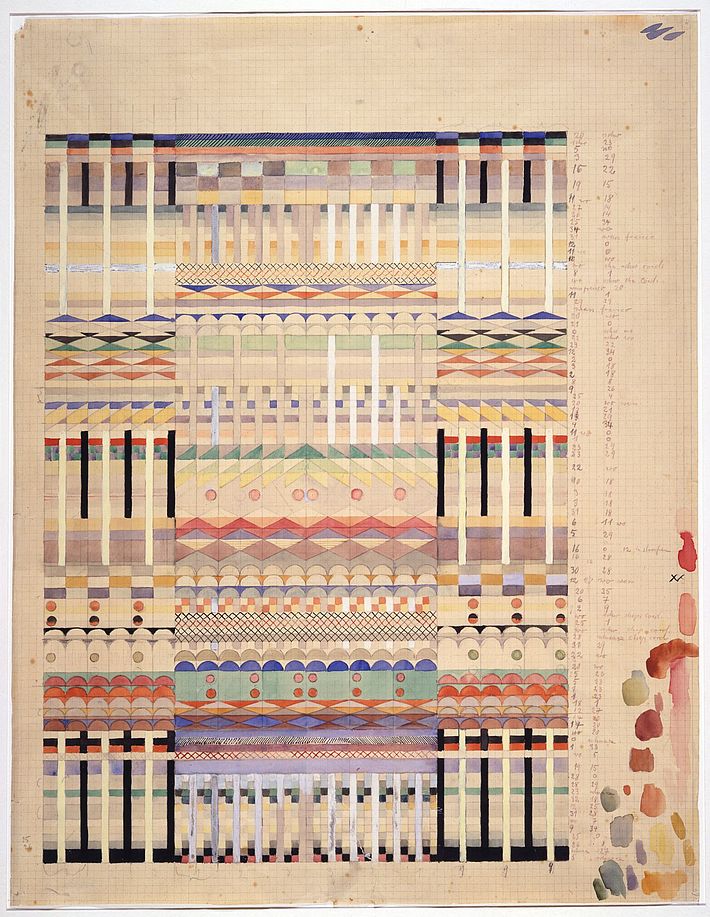Five Choirs
Gunta Stölzl, 1928

[Translate to English:] text
Starting in 1926, Anni Albers and Gunta Stölzl began to work with the Jacquard technique, in which the warp can be selectively raised and lowered using punch cards, so that patterns of any degree of complexity can be produced. The Jacquard technique was appropriate for the aim of the Bauhaus in Dessau to achieve a wide public influence. It requires a great deal of preliminary work, but this is worthwhile when large quantities of the same fabric are produced.
The name ‘Five Choirs’* refers to the five-part heddle mechanism with which warps are raised. Gunta Stölzl planned a large production run for the ‘Five Choirs’ wall hanging. One copy is held by the Museum of Art and Cultural History in the Hanseatic City of Lübeck, and a second has been lost.
The 24 Jacquards produced by Gunta Stölzl include another completed wall hanging and nine designs for wall hangings.
* Jeroen Vinken questions the accuracy of the title in a 2013 article.
Authors:
Monika Stadler / Yael Aloni (Gunta Stölzl's daughters).
- Literature:
- Vinken, Jeroen (2013): ‘Exkurs: Fünf Chöre. Zu einem Wandbehang von Gunta Stölzl’, in: To Open Eyes. Kunst und Textil vom Bauhaus bis Heute. exh. cat., Kunsthalle Bielefeld.
- Smith, T'ai (2009): ‘Gunta Stölzl 5 Choirs. 1928.’ in: Bauhaus 1919–1933: Workshops for Modernity. Edited by Leah Dickermann and Barry Bergdoll, exh. cat., New York: Museum of Modern Art, pp. 206–209.